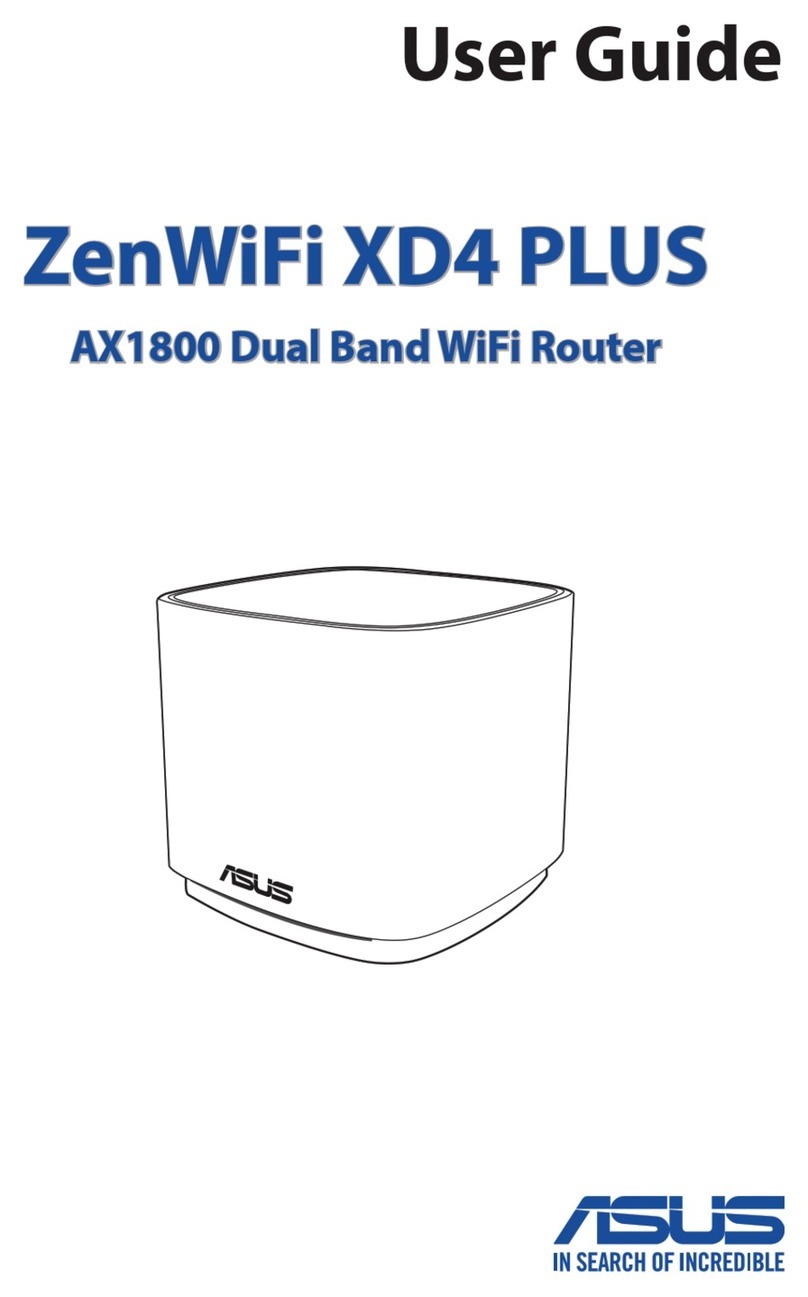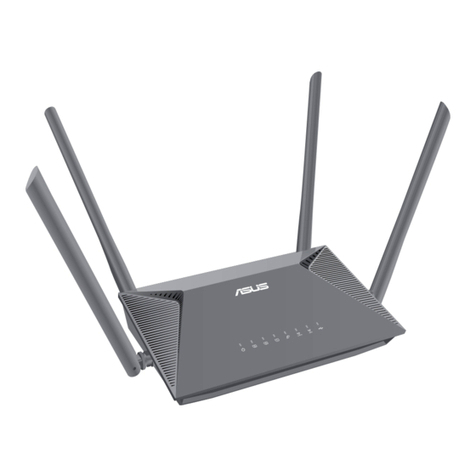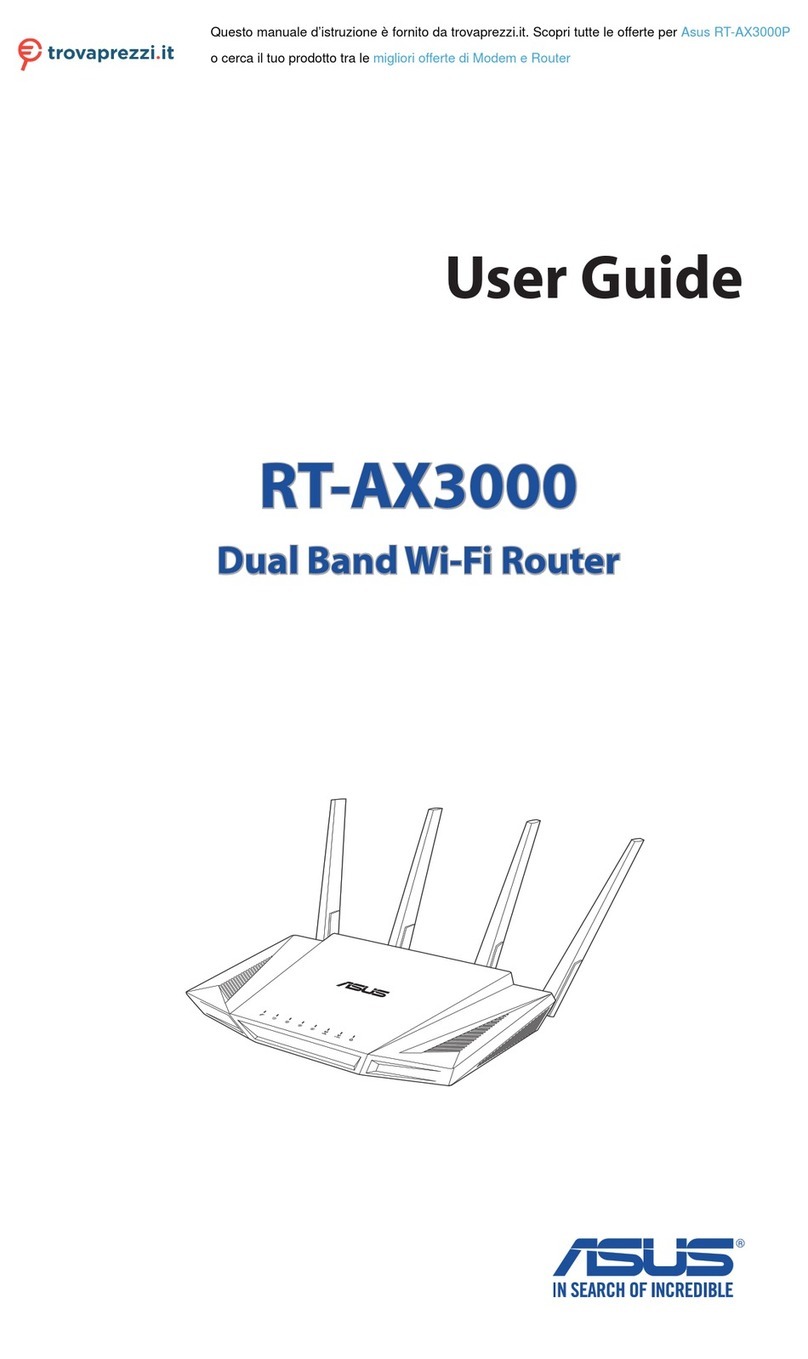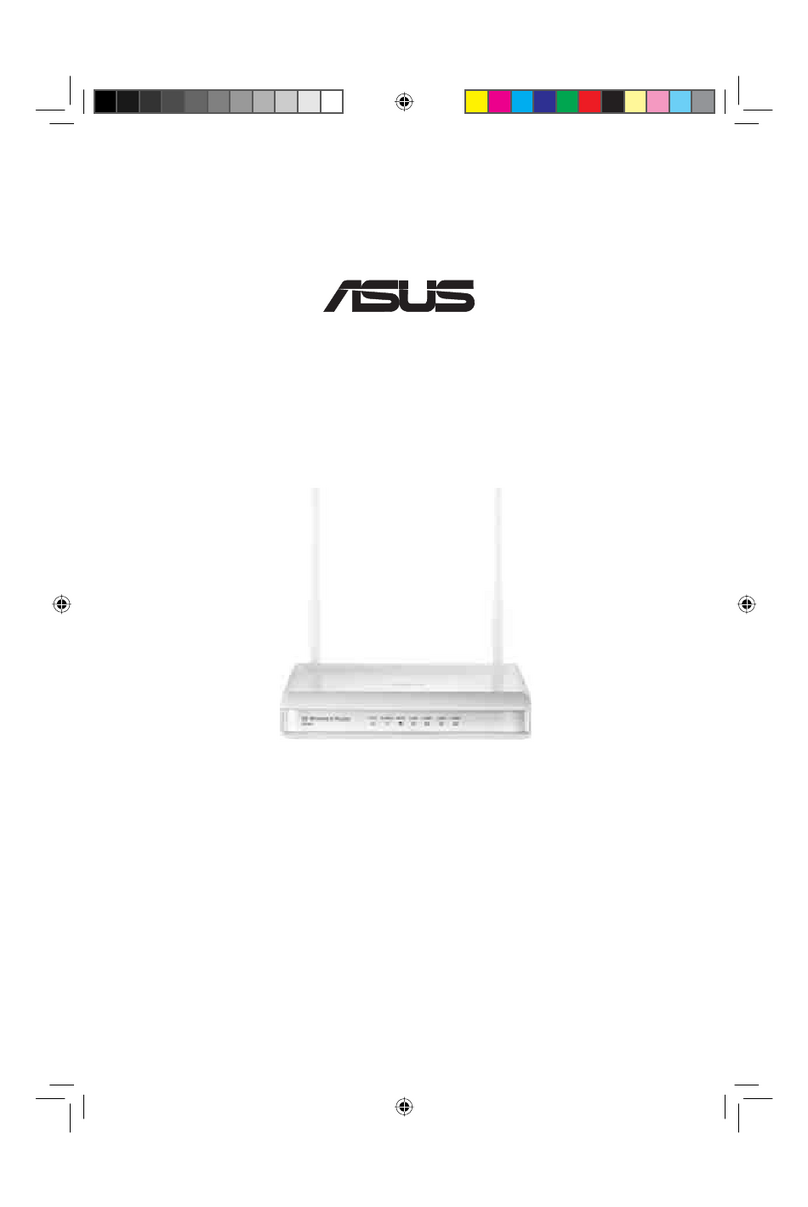Asus RT-AC54U User manual
Other Asus Network Router manuals
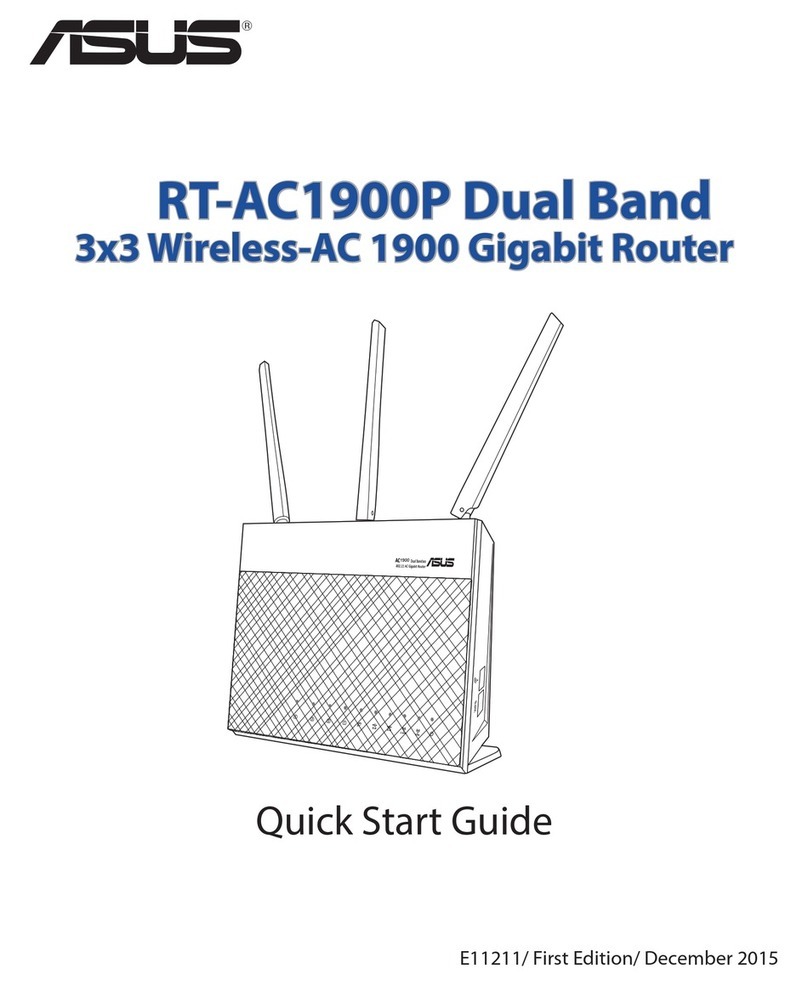
Asus
Asus RT-AC1900P User manual
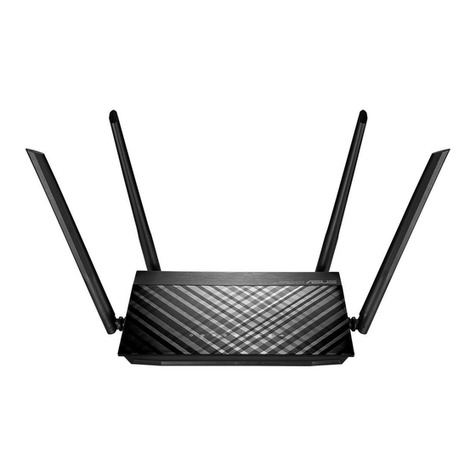
Asus
Asus RT-AC58U User manual

Asus
Asus REPUBLIC OF GAMERS GT-AX6000 User manual
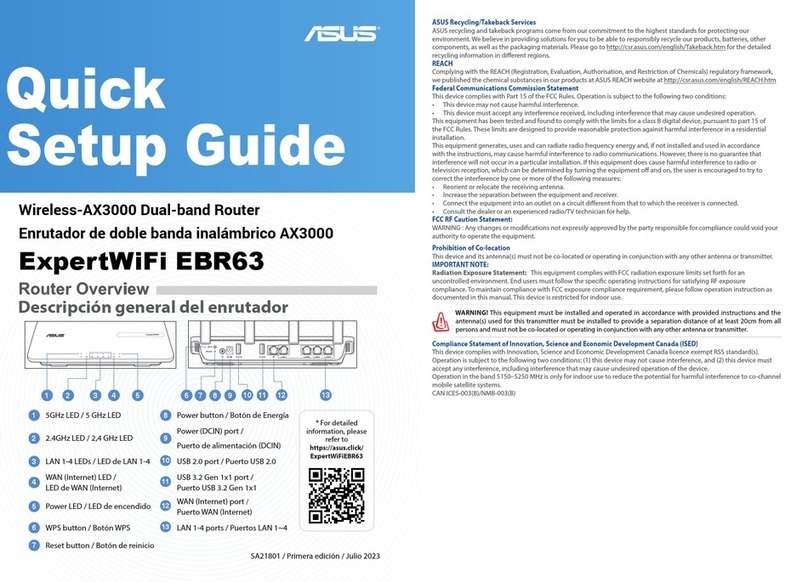
Asus
Asus ExpertWiFi EBR63 User manual
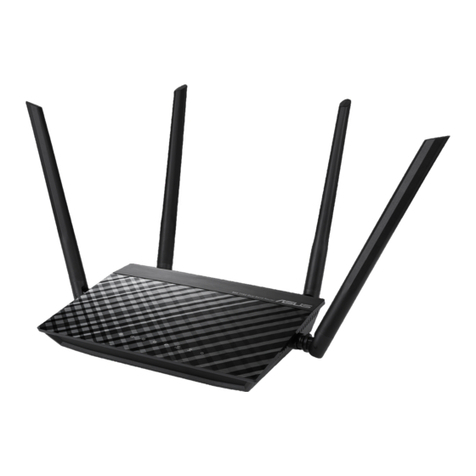
Asus
Asus RT-AC51 Instruction manual
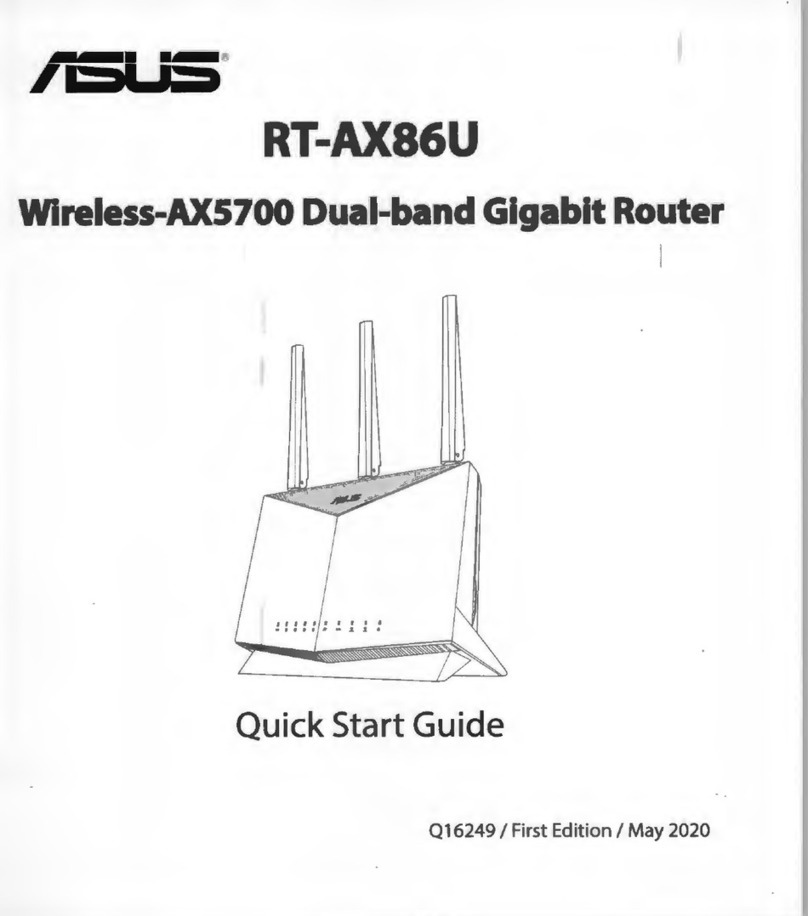
Asus
Asus RT-AX86U User manual
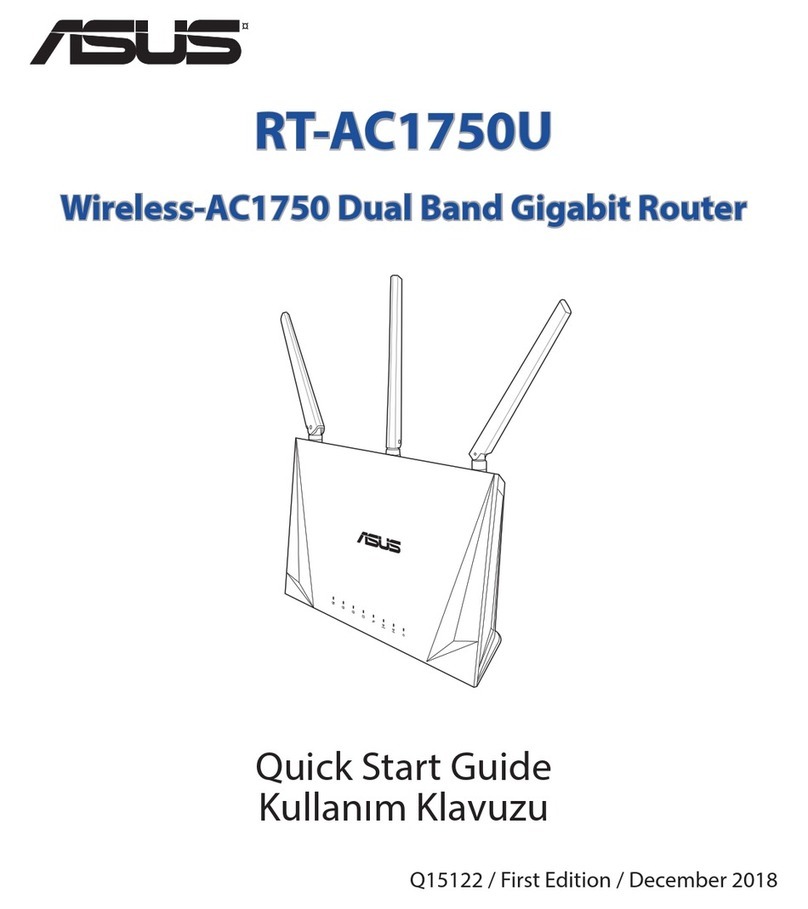
Asus
Asus RT-AC1750U User manual

Asus
Asus 4G-N12 User manual
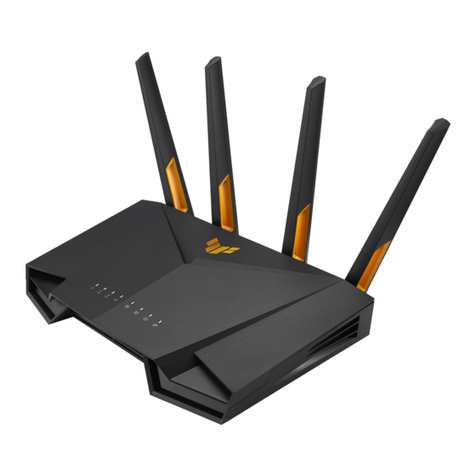
Asus
Asus TUF-AX3000 V2 User manual

Asus
Asus RT-AC58U V3 User manual

Asus
Asus 90IG0560-MO3G10 User manual
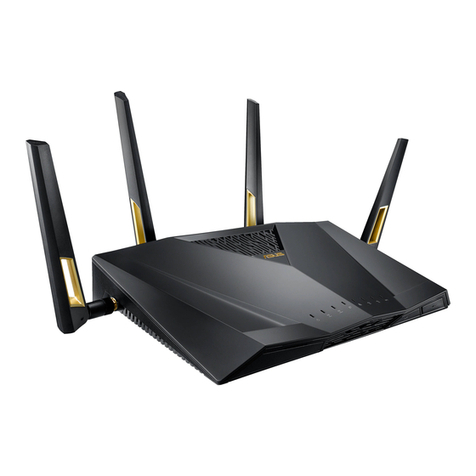
Asus
Asus RT-AX88U User manual
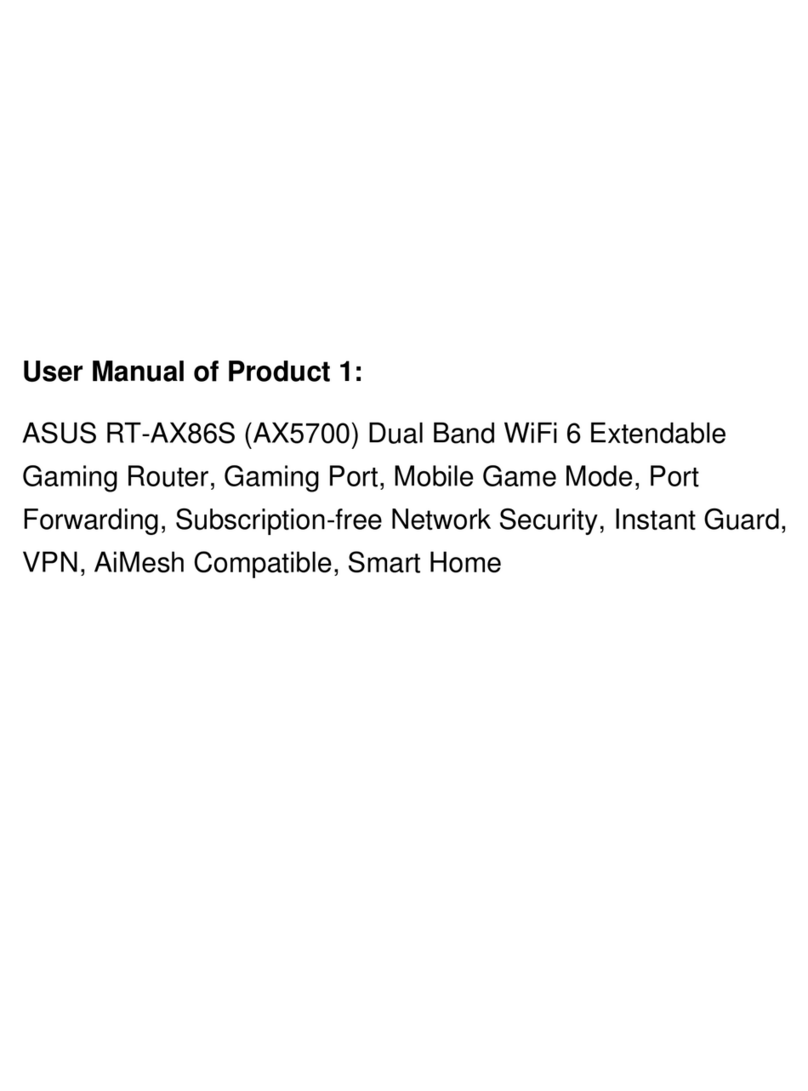
Asus
Asus RT-AX86S User manual
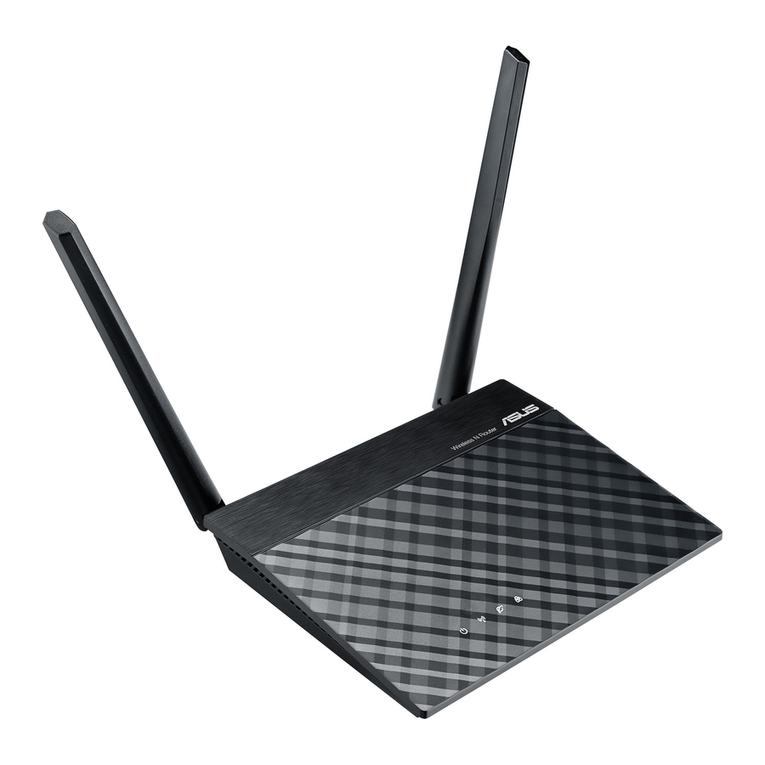
Asus
Asus RT-N300 B1 User manual
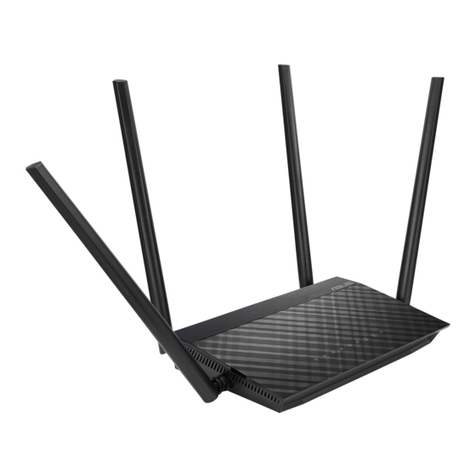
Asus
Asus RT-AC1500UHP User manual
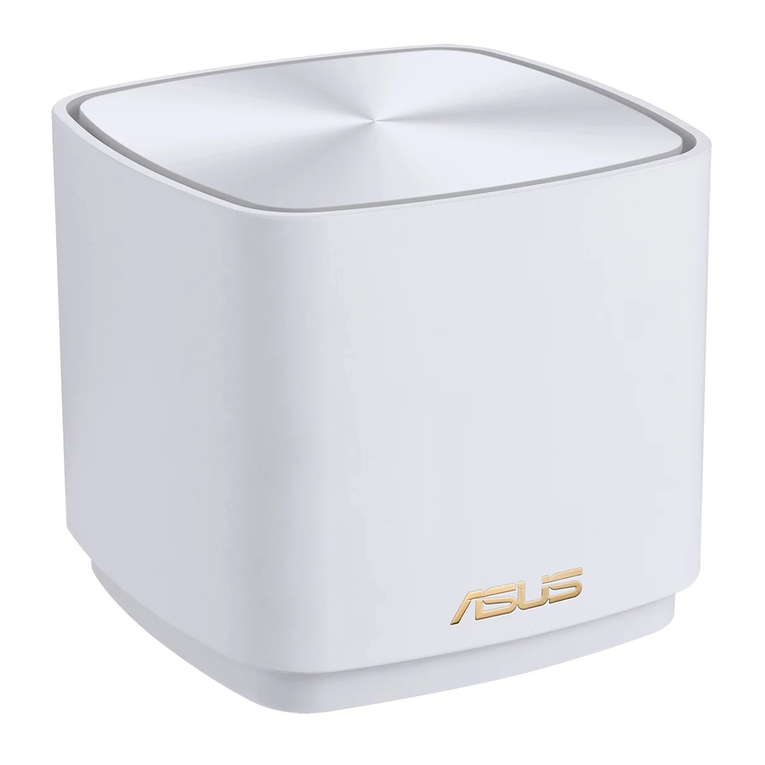
Asus
Asus ZenWiFi XD5 User manual
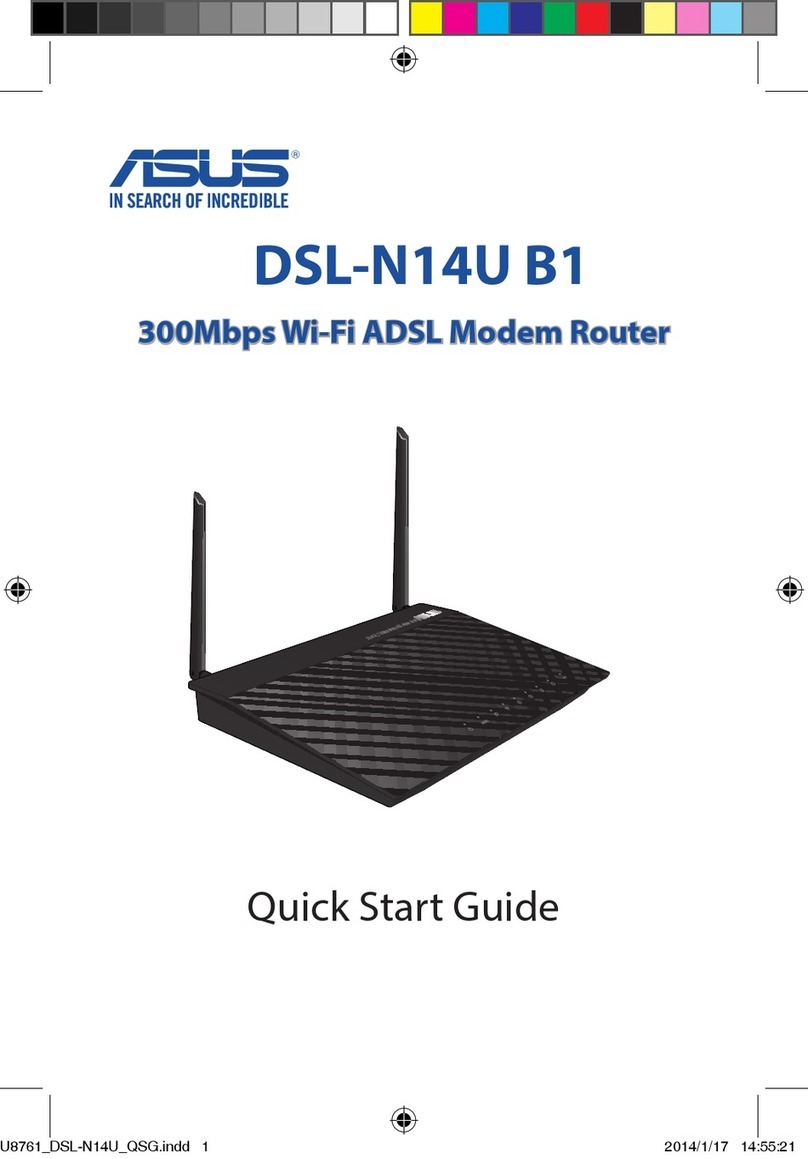
Asus
Asus DSL-N14U B1 User manual
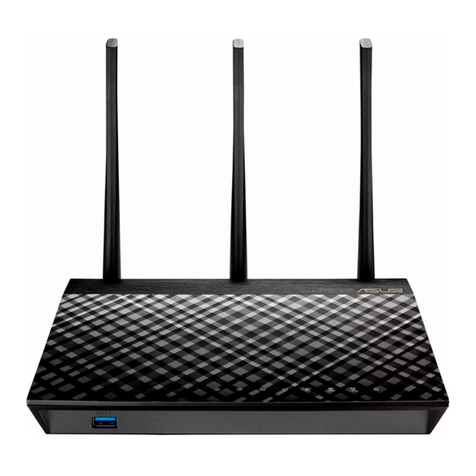
Asus
Asus AiMesh-AC1750 User manual
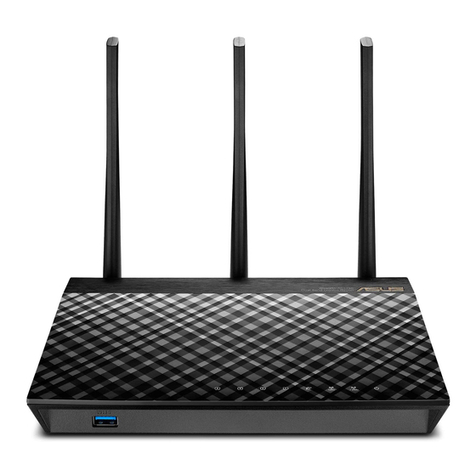
Asus
Asus RT-N66U Dark Knight User manual

Asus
Asus RT-N15 SuperSpeed N User manual
Popular Network Router manuals by other brands

TRENDnet
TRENDnet TEW-435BRM - 54MBPS 802.11G Adsl Firewall M Quick installation guide

Siemens
Siemens SIMOTICS CONNECT 400 manual

Alfa Network
Alfa Network ADS-R02 Specifications

Barracuda Networks
Barracuda Networks Link Balancer quick start guide

ZyXEL Communications
ZyXEL Communications ES-2024PWR Support notes

HPE
HPE FlexNetwork 5510 HI Series Openflow configuration guide
